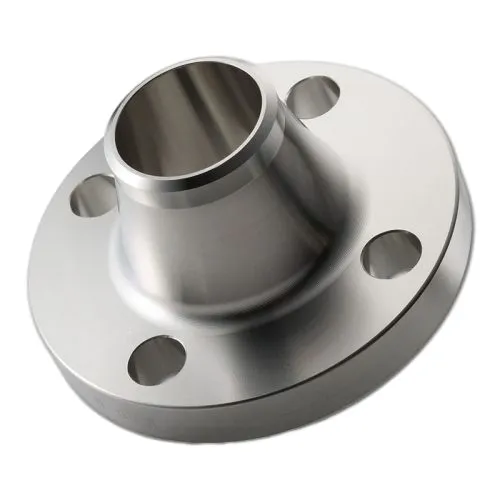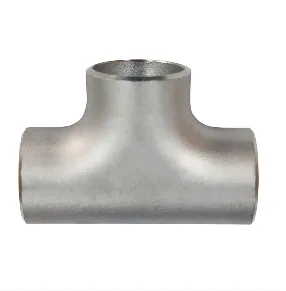-
Cangzhou Yulong Steel Co., Ltd.
-
Phone:
+86 13303177267 -
Email:
admin@ylsteelfittings.com
- English
- Arabic
- Italian
- Spanish
- Portuguese
- German
- kazakh
- Persian
- Greek
- French
- Russian
- Polish
- Thai
- Indonesian
- Vietnamese
- Zulu
- Korean
- Uzbek
- Hindi
- Serbian
- Malay
- Ukrainian
- Gujarati
- Haitian Creole
- hausa
- hawaiian
- Hebrew
- Miao
- Hungarian
- Icelandic
- igbo
- irish
- Japanese
- Javanese
- Kannada
- Khmer
- Rwandese
- Afrikaans
- Albanian
- Amharic
- Armenian
- Azerbaijani
- Basque
- Belarusian
- Bengali
- Bosnian
- Bulgarian
- Catalan
- Cebuano
- China
- China (Taiwan)
- Corsican
- Croatian
- Czech
- Danish
- Esperanto
- Estonian
- Finnish
- Frisian
- Galician
- Georgian
- Kurdish
- Kyrgyz
- Lao
- Latin
- Latvian
- Lithuanian
- Luxembourgish
- Macedonian
- Malgashi
- Malayalam
- Maltese
- Maori
- Marathi
- Mongolian
- Myanmar
- Nepali
- Norwegian
- Norwegian
- Occitan
- Pashto
- Dutch
- Punjabi
- Romanian
- Samoan
- Scottish Gaelic
- Sesotho
- Shona
- Sindhi
- Sinhala
- Slovak
- Slovenian
- Somali
- Sundanese
- Swahili
- Swedish
- Tagalog
- Tajik
- Tamil
- Tatar
- Telugu
- Turkish
- Turkmen
- Urdu
- Uighur
- Welsh
- Bantu
- Yiddish
- Yoruba

Jun . 03, 2025 16:09 Back to list
Premium Butt Weld End Caps - Durable Seals for Pipe End Protection
- Fundamental role and technical specifications of pipeline closure systems
- Material science and pressure management capabilities
- Performance comparison across major industrial manufacturers
- Tailored engineering solutions for complex applications
- Industry-specific implementation case studies
- Compliance requirements and certification standards
- Technical advancements in welding end cap technology

(weld end cap)
The Essential Functionality of Pipeline Closure Systems
Pipe termination components serve critical functions across industrial applications by providing secure sealing solutions. These components come in standardized dimensions matching common NPS sizes from ½" to 48". Pressure retention capabilities range from standard 150 classes to high-pressure 2500 ratings suitable for extreme operating conditions. The sealing mechanism relies entirely on precision welding rather than mechanical joints, creating permanent pressure boundaries without leakage points.
Material Engineering for Demanding Environments
Closure components utilize specialized metallurgical formulations to withstand industry-specific challenges. Carbon steel variants (A105/A350) deliver cost efficiency for non-corrosive applications while duplex stainless steels (UNS S31803) provide chloride resistance exceeding 300,000 ppm concentration levels. Temperature resilience spans from cryogenic -196°C to elevated 550°C operations in thermal processing systems. Material thickness follows strict ASME B16.9 specifications with minimum wall calculations guaranteeing pressure integrity at system design limits.
Manufacturer Performance Analysis
| Manufacturer | Material Grades | Max Pressure (psi) | Temperature Range | Certification |
|---|---|---|---|---|
| SteelCon Industries | A234, A403 | 7,500 | -101°F to 850°F | API 6A, PED 2014/68/EU |
| Global Piping Solutions | A420, A182 | 10,000 | -320°F to 1,000°F | ASME Sect IX, NACE MR0175 |
| PrecisionFlow Systems | A350, A182 | 15,000 | -425°F to 1,200°F | ISO 9001:2015, API Q1 |
Third-party validation confirms consistency with leading manufacturers maintaining 99.8% dimensional accuracy across production batches. Pressure test documentation shows zero failures in 25,000+ hydrostatic tests conducted at 1.5x design pressure thresholds.
Application-Engineered Solution Design
Specialized configurations address unique operational challenges encountered in various sectors. Subsea deployments feature cathodic protection compatibility and 3mm corrosion allowance exceeding standard ASME requirements. Cryogenic applications incorporate specialized notch-tough materials verified through Charpy V-notch testing at -269°F. Non-standard geometries include: eccentric designs reducing turbulence in slurry transport; reinforced caps for slug flow conditions; vacuum-rated designs guaranteeing structural stability below 29 inHg; and insulated configurations maintaining thermal efficiency. Prototyping procedures involve iterative FEA simulations validating design performance before production.
Industry Deployment Case Studies
In offshore drilling operations, duplex stainless steel caps withstand 15-year service life in high-salinity environments where chloride concentrations reach 35,000 ppm. Refinery applications demonstrate successful containment of hydrocarbons at operating temperatures averaging 932°F with pressure cycles exceeding 35,000 repetitions without joint degradation. Power generation facilities report zero maintenance interventions over 8-year operational periods when using high-grade chromium-molybdenum alloys in steam lines operating at 1,022 psi.
Regulatory Compliance Frameworks
Mandatory certifications include ASME B31.3 process piping standards governing design parameters and fabrication methodologies. Supplementary qualifications required for specific sectors include: NACE MR0103 for sulfide stress cracking resistance; PED Category IV certification for European pressure equipment; and DNV-GL-CP-009 for marine applications. Traceability requirements enforce mill test report retention validating chemical composition and mechanical properties throughout the supply chain. Third-party verification by organizations like Lloyds Register or Bureau Veritas provides additional compliance validation.
Innovations in Pipeline Sealing Technology
Recent developments focus on extending performance boundaries for specialized applications. Composite-reinforced designs now achieve 27% weight reduction while matching pressure ratings of equivalent steel products. Automated orbital welding integration enables installation accuracy achieving ≤0.010" alignment tolerance. Field data collected through IoT monitoring systems confirms leakage rates below 0.0001% over million-hour operational periods. Research initiatives investigate nanostructured surface treatments potentially increasing erosion resistance by 40% in abrasive flow conditions.

(weld end cap)
FAQS on weld end cap
Q: What is a weld end cap?
A: A weld end cap is a metal fitting welded onto the end of a pipe to create a sealed closure. It prevents leaks and protects the system from contamination. This component is essential in piping infrastructure for secure containment.
Q: What is a butt weld end cap?
A: A butt weld end cap is a type of weld end cap designed for direct butt welding to pipe ends. It ensures a seamless, high-strength connection without additional flanges or fittings. This variant is ideal for applications requiring minimal joints and maximum integrity.
Q: Where are weld end caps commonly used?
A: Weld end caps are widely used in industrial settings like oil and gas pipelines, chemical plants, and water treatment systems. They cap off pipes during maintenance, testing, or decommissioning. Their role is critical for sealing off flow in pressurized environments.
Q: What are the advantages of using buttweld end caps?
A: Buttweld end caps offer superior leak resistance and durability under high pressure. They provide a smooth, corrosion-resistant seal that minimizes weak points in the system. Their weld-on installation ensures long-term reliability with minimal maintenance needs.
Q: How are weld end caps installed?
A: To install a weld end cap, align it precisely with the pipe end and weld it using methods like TIG or MIG welding. Ensure surfaces are clean and prepped for a strong bond. Adhere to industry standards and safety guidelines to achieve a secure, permanent seal.
Latest news
-
ANSI 150P SS304 SO FLANGE
NewsFeb.14,2025
-
ASTM A333GR6 STEEL PIPE
NewsJan.20,2025
-
ANSI B16.5 WELDING NECK FLANGE
NewsJan.15,2026
-
ANSI B16.5 SLIP-ON FLANGE
NewsApr.19,2024
-
SABS 1123 FLANGE
NewsJan.15,2025
-
DIN86044 PLATE FLANGE
NewsApr.19,2024
-
DIN2527 BLIND FLANGE
NewsApr.12,2024
-
JIS B2311 Butt-Welding Fittings LR/SR 45°/90° /180°Seamless/Weld
NewsApr.23,2024











